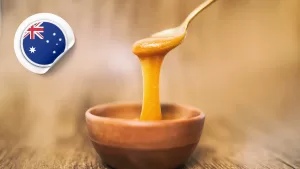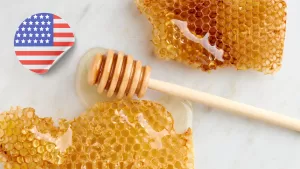Bees are not just honey-makers; they are essential contributors to our ecosystems, agriculture, and overall biodiversity. With over 20,000 species of bees worldwide, these industrious insects exhibit a fascinating variety of traits, behaviors, and ecological roles. In this article, we will explore the most notable bee species, their unique characteristics, and the vital roles they play in nature.
Table of Contents
Toggle1. The Importance of Bees in Our Ecosystem
Before diving into the various species, it’s crucial to understand why bees are so important. Bees are pollinators, responsible for the reproduction of many plants, including a significant number of crops that humans rely on for food. According to the Food and Agriculture Organization (FAO), around 75% of the world’s food crops depend on pollination, with bees being among the most effective pollinators. Their decline poses a significant threat to global food security and biodiversity.
2. Honey Bees (Apis mellifera)
Honey bees are perhaps the most well-known bee species. They are social insects that live in colonies, consisting of a queen, worker bees, and drones. Here are some fascinating aspects of honey bees:
- Social Structure: Honey bee colonies can house 20,000 to 80,000 individuals. The queen is the colony’s reproductive member, laying up to 2,000 eggs per day during peak seasons. Worker bees perform various tasks, including foraging for nectar, caring for the young, and defending the hive. Drones are males whose sole purpose is to mate with a queen.
- Honey Production: Honey bees are renowned for producing honey, a process that begins when they forage for nectar from flowers. They convert nectar into honey through enzymatic activity and evaporation. This honey serves as food for the colony and is harvested by beekeepers for human consumption.
- Pollination Efficiency: Honey bees are highly effective pollinators due to their foraging behavior. They visit multiple flowers in a single trip, transferring pollen as they go, which enhances fruit and seed production in flowering plants.
3. Bumblebees (Bombus spp.)
Bumblebees are larger and fuzzier than honey bees, making them easily recognizable. They play a critical role in pollination, especially for plants requiring “buzz pollination,” where vibrations help release pollen.
- Social Behavior: Bumblebees are social insects but have a simpler social structure than honey bees. A typical bumblebee colony consists of a queen, female workers, and males, but they are smaller, usually containing about 50 to 400 individuals.
- Habitat and Nesting: Bumblebees prefer nesting in the ground, often utilizing abandoned burrows or dense vegetation. They are essential pollinators for early spring flowers, making them crucial for ecosystem health.
- Decline and Conservation: Bumblebee populations have been declining due to habitat loss, pesticide use, and climate change. Conservation efforts are critical to protecting these vital pollinators.
4. Solitary Bees
Unlike honey bees and bumblebees, solitary bees do not live in colonies. Each female typically builds her own nest and is responsible for raising her offspring.
- Mason Bees (Osmia spp.): Mason bees are efficient pollinators, especially for fruit trees. They nest in hollow stems or wood cavities and are often attracted to bee houses provided by gardeners.
- Leafcutter Bees (Megachile spp.): These bees are named for their habit of cutting leaves to line their nests. They are excellent pollinators and prefer flowers like clover and alfalfa.
- Importance in Pollination: Solitary bees contribute significantly to pollination, often visiting a wide variety of flowers. They are essential for many wild plants and contribute to the overall health of ecosystems.
5. Carpenter Bees (Xylocopa spp.)
Carpenter bees are large, robust bees known for burrowing into wood to create nests. They are often mistaken for bumblebees due to their size and appearance.
- Nesting Habits: Carpenter bees drill holes in wood, which can cause damage to wooden structures. They prefer untreated wood and can create extensive tunnels.
- Role in Pollination: Despite their reputation for causing damage, carpenter bees are effective pollinators. They have a unique ability to pollinate certain flowers that require larger body sizes.
- Conservation Considerations: While they may be seen as pests, carpenter bees play a crucial role in maintaining biodiversity. Encouraging natural habitats and reducing pesticide use can help support their populations.
6. Orchid Bees (Euglossini)
Orchid bees are unique to the tropical regions of Central and South America. These bees are known for their striking colors and fascinating behaviors.
- Male Behavior and Fragrance Collection: Male orchid bees collect fragrances from various sources, including flowers and rotting fruit. They store these scents in hind leg pouches and use them to attract females during mating rituals.
- Pollination of Orchids: Orchid bees are vital pollinators for many orchid species. They have specialized mouthparts that allow them to access nectar deep within flowers, ensuring successful pollination.
- Environmental Indicators: Due to their sensitivity to habitat changes, orchid bees serve as important indicators of environmental health and biodiversity.
7. Other Notable Bee Species
- Stingless Bees (Meliponini): Stingless bees are social bees found in tropical and subtropical regions. They are known for their unique nesting habits and produce honey that is often less sweet than that of honey bees.
- Sweat Bees (Halictidae): These small bees are attracted to human sweat and are often seen buzzing around during warm months. They are excellent pollinators, especially for wildflowers.
- Leafcutting Bees (Megachile): These bees cut leaves to construct their nests and are crucial for pollinating alfalfa and other crops. They play a significant role in agriculture and natural ecosystems.
8. The Threats Facing Bee Species
Despite their importance, bees face numerous threats:
- Habitat Loss: Urbanization, agriculture, and deforestation contribute to habitat loss, limiting food sources and nesting sites for bees.
- Pesticides: The use of chemical pesticides poses severe risks to bee health. Neonicotinoids, in particular, have been linked to colony collapse and decreased bee populations.
- Climate Change: Shifts in climate patterns can disrupt flowering times and the availability of food sources, affecting bee populations.
- Diseases and Parasites: Bees are susceptible to various diseases and parasites, such as the Varroa mite, which can devastate colonies.
9. Supporting Bee Populations
To help support bee populations and their habitats, consider the following actions:
- Plant Bee-Friendly Flowers: Planting native flowering plants can provide food sources for bees throughout the growing season.
- Avoid Pesticides: Reducing or eliminating pesticide use in your garden can create a safer environment for bees.
- Create Nesting Habitats: Provide bee houses or leave areas of your garden undisturbed to encourage nesting for solitary bees.
- Support Local Beekeepers: Buying honey and bee products from local beekeepers helps sustain beekeeping practices and supports local ecosystems.
10. Conclusion
The diverse world of bee species is a testament to nature’s ingenuity and the vital roles these creatures play in our ecosystem. Understanding and appreciating the different types of bees, from honey bees to solitary bees, can inspire us to take action to protect them. As stewards of the environment, we have the power to make choices that benefit these essential pollinators and contribute to the health of our planet.
Let’s cherish and protect our buzzing friends!



